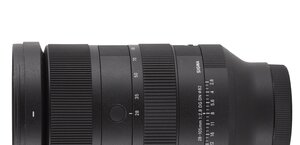Panasonic Leica DG Macro-Elmarit 45 mm f/2.8 ASPH. M.O.I.S.
11. Summary
- compact and solid barrel,
- sensational image quality in the frame centre,
- negligible chromatic aberration,
- low distortion,
- well-corrected astigmatism,
- decent work against bright light,
- silent and accurate autofocus.
Cons:
- average image quality on the very edge of the frame,
- noticeable coma,
- a bit too high vignetting,
- slow autofocus in the FULL mode.
In the summary of the Panasonic-Leica DG MACRO-ELMARIT 45 mm f/2.8 ASPH. MEGA O.I.S. it would be difficult not to take into account the price, especially as we deal here with one of the most expensive lenses of the Micro 4/3 system. A comparison with another mirrorless system lens is almost impossible because you can’t find anything like a classic macro lens in the line-up of any other producer. If you want to look for a macro lens, equipped with image stabilization and designed for smaller sensors, in other systems you might think instantly about the Nikkor AF-S DX Micro 85 mm f/3.5G ED VR, tested by us not so long ago. The Panasonic’s build quality is better than that of the Nikkor but if you take into account all optical properties both instruments are more or less on a par with each other. The Nikkor is significantly cheaper than the Panasonic, though.
Please Support UsIf you enjoy our reviews and articles, and you want us to continue our work please, support our website by donating through PayPal. The funds are going to be used for paying our editorial team, renting servers, and equipping our testing studio; only that way we will be able to continue providing you interesting content for free. |
- - - - - - - - - - - - - - - - - - - - - - - - - - - - - - - - - - - - - - - - - - - - - - - -
It goes without saying that lowering the price of the tested Panasonic would allow us to write some warmer remarks in the summary. With the current price tag you would like the lens to have no faults at all. It is hardly a faultless device, though. Of course you can ask whether these faults are really mainly optical problems. The growing number of tests shows unambiguously that practically all mirrorless systems lenses have huge problems with preserving very good image quality on the edge of the frame. Everything has its price. Removing the mirror was certainly a good idea when you take the dimensions of a body into account. Unfortunately as a result the rear element of a lens gets much closer to the sensor. The combination of small elements (and we meet these the most often when it comes to small mirrorless lenses) and a short distance to the sensor is a recipe for telecentricity problems and a weaker performance on the edge of the frame.
Sample shots






